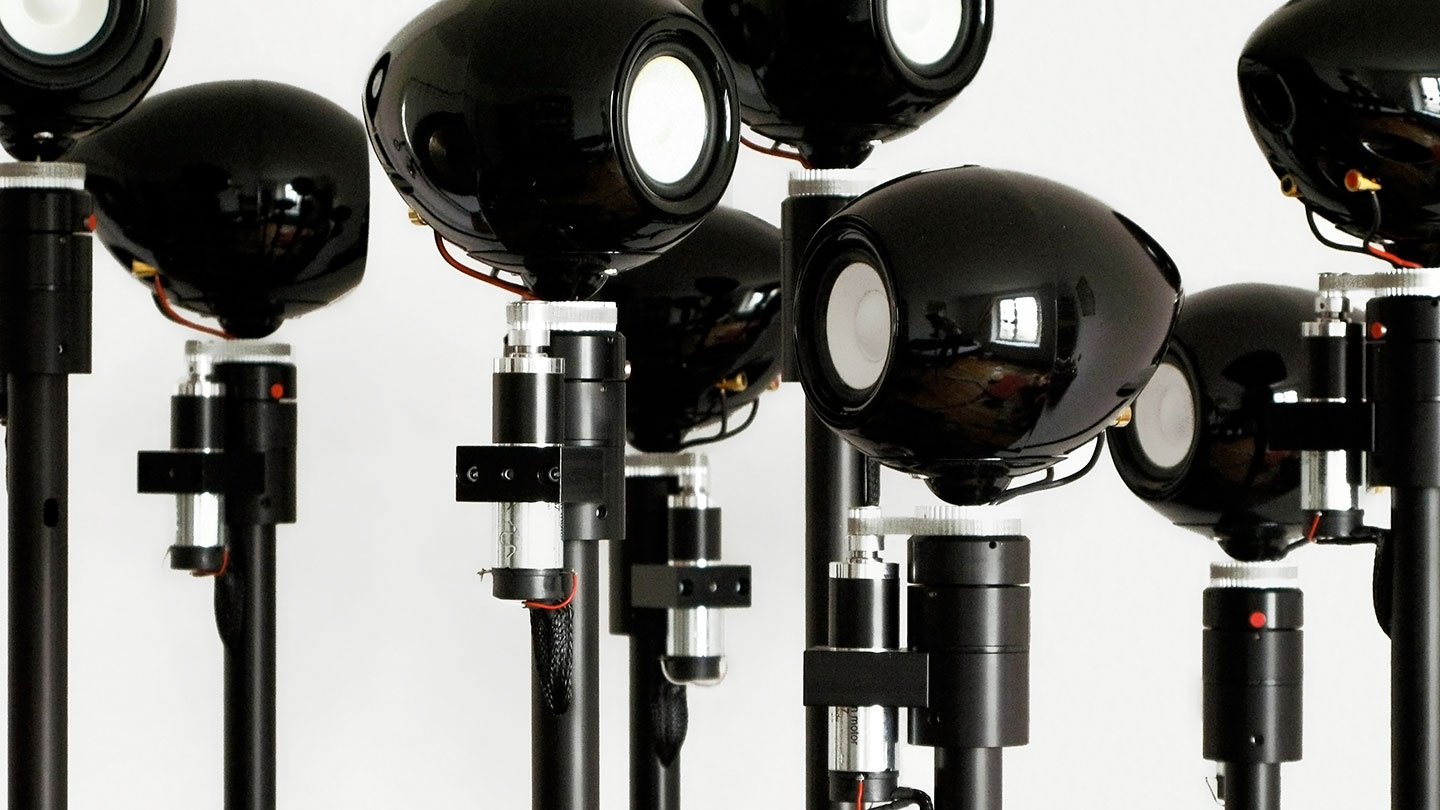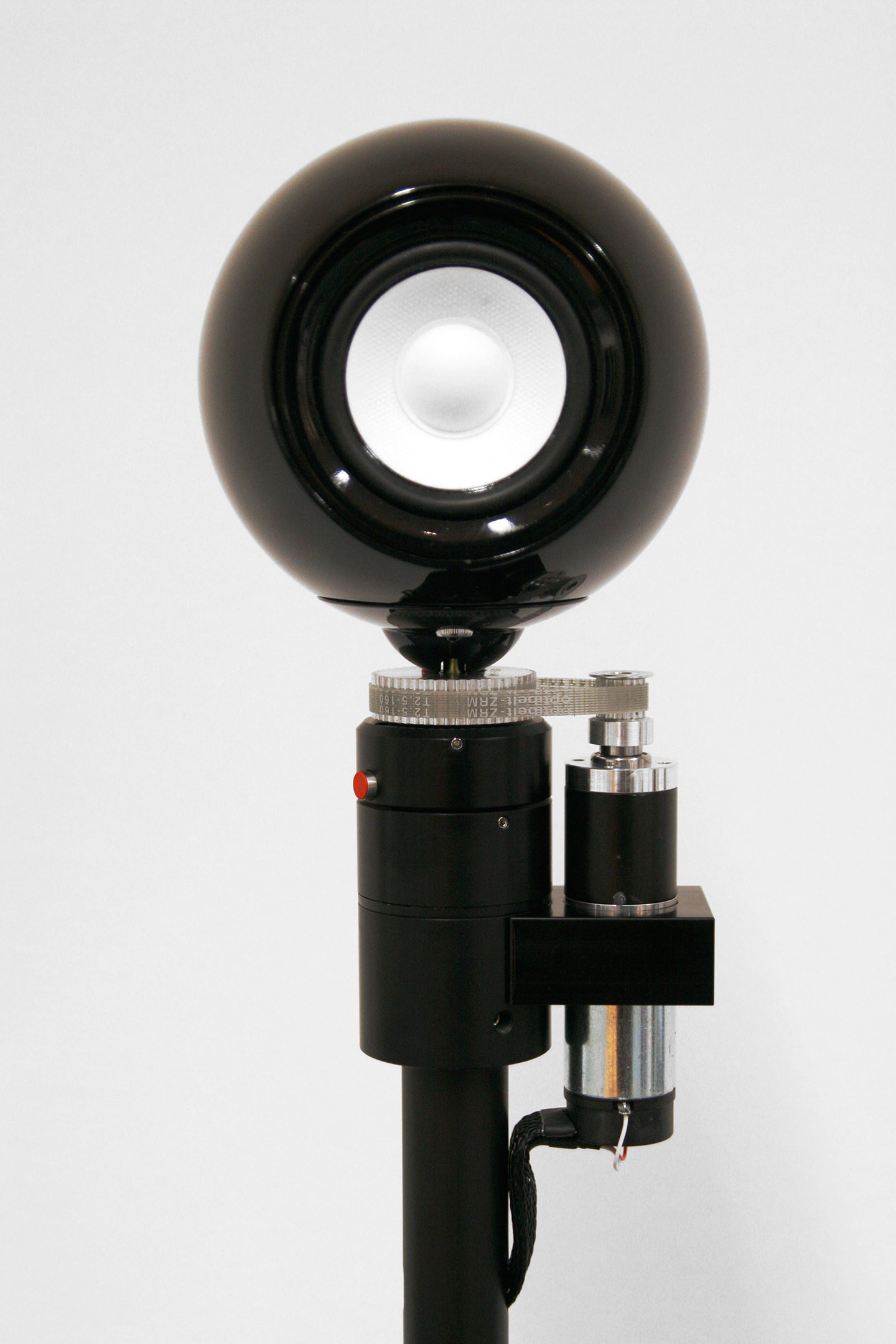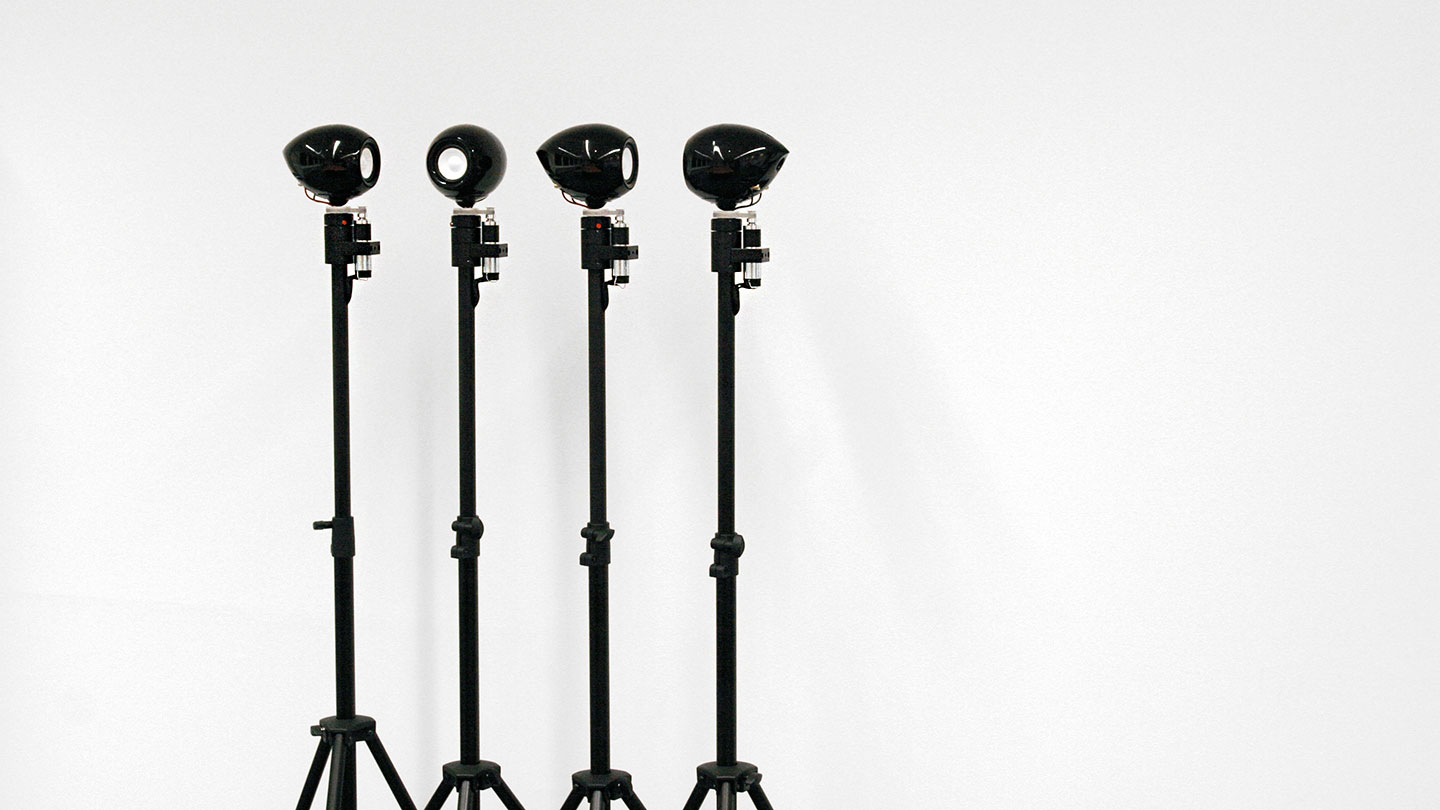Kinetic Speakers Nr. 37 - 44
Transducer, Sensors, Custom mecanical parts, electronics and software
Size: Variable
Year: 2008 Edition: unique
Kinetic Speakers proposes a modular interactive environment permitting the variable listening and processing of external sound-sources.
A responsive mobile speaker system generates sound through a mapping of environmental sounds and the physical distention and clustering of the speakers themselves. The primacy of sound and the sparse, focussed nature of the visual apparatus sensitize the observer to the processes of listening and being listened to. Even small physical motion within the loudspeaker array is then understood in its relation to sound. Eight specially designed speakers are individually controlled by highly accurate motors and position sensors allowing for precisely calibrated positioning and rotation. An evenly distributed microphone matrix isolates specific sound sources, which the detached and fully rotational speaker membranes are able to track and respond to in 2-dimensional space.
The speakers and microphones assemble a listening system which moves between modes of interacting with sonic environmental input. In the first mode, a form of passive listening in response to an over-saturated acoustical environment, the system silently gathers environmental information. Under such conditions the speaker membranes are inert and the physical movement of the mechanism is made more visually apparent.
The second, and most internally differentiated, is a mode of selective listening in which the program interprets and synthesizes, sometimes blending with the gathered material, and sometimes contrasting with the acoustic input.In the case of low external stimuli, the system passes to a reflexive mode in which it listens and reprocesses its own memory.
Rather than the listener adapting to the acoustic situation, here the acoustic situation is adapted to the listener. Working against our everyday forms of sonic self-awareness (the involuntary, exploratory and communicative sounds that we create and constitute), the experience disassociates the self as a sound-source, and leads to a richer re-perception of the same sounds. The reactions of the system (made possible though a complex internal mapping of “gathered” sounds) allow the participant to apprehend the system as a behavioral organism to which she can adjust and communicate. The indirect responses from this behavioral network create a more complex and less one-to-one form of interaction.
The global apprehension of the work ranges from the experience of an immersive environment to the observation of a “sculptural” sound-object
(from inside to outside and back).
I should also add that the special nature of sound entails an immediate and involuntary engagement with the system’s responses to the listener, something unavailable to more visually-based work.


